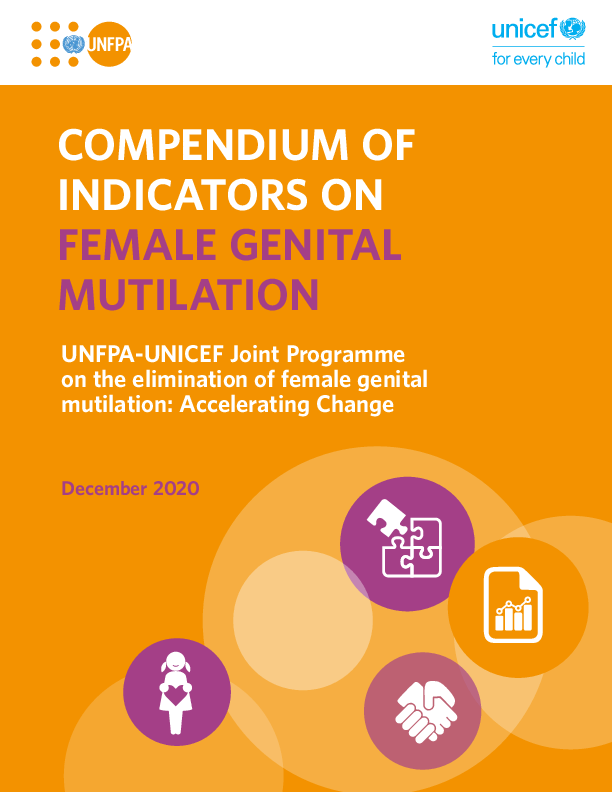
Publication
Compendium of Indicators on Female Genital Mutilation
Number of pages: 92
Publication date: 01 Dec 2020
Author: UNFPA, UNICEF

Publication
Number of pages: 92
Publication date: 01 Dec 2020
Author: UNFPA, UNICEF
Several compendiums of indicators have been produced in the last 10 years in the fields of gender, youth, sexual and reproductive health and rights and child protection. Although these include some indicators of Female Genital Mutilation, this current compendium builds on previous documents and analyses, in particular from the UNFPA-UNICEF Joint Programme on the elimination of FGM, and is the first attempt to consolidate several FGM indicators together in one place, in a concise but comprehensive way.
The compendium seeks to address some of the challenges hindering current responses to FGM. These include limited and poor-quality monitoring and evaluation (M&E) of FGM interventions, and data quality limitations. Data and statistics on FGM are insufficiently used in M&E and advocacy, and there is no uniform guidance on data that need to be collected and statistics that need to be produced.
Measuring the effectiveness of interventions has proven challenging, partly because of the lack of relevant indicators and standardized definitions that would allow comparisons across programmes and geographical locations, and over time.
In addition, little effort has been made to clarify how FGM programmes can contribute to wider discriminatory social and gender norms change to achieve gender equality. This compendium attempts to provide a set of indicators that could assess this complex dimension.
Finally, policymakers, programmers and donors need to measure progress and report on SDG target 5.3. They need to know which indicators to use to monitor the pace of change and set realistic targets. This compendium offers a menu of indicators to determine if interventions are producing tangible results.